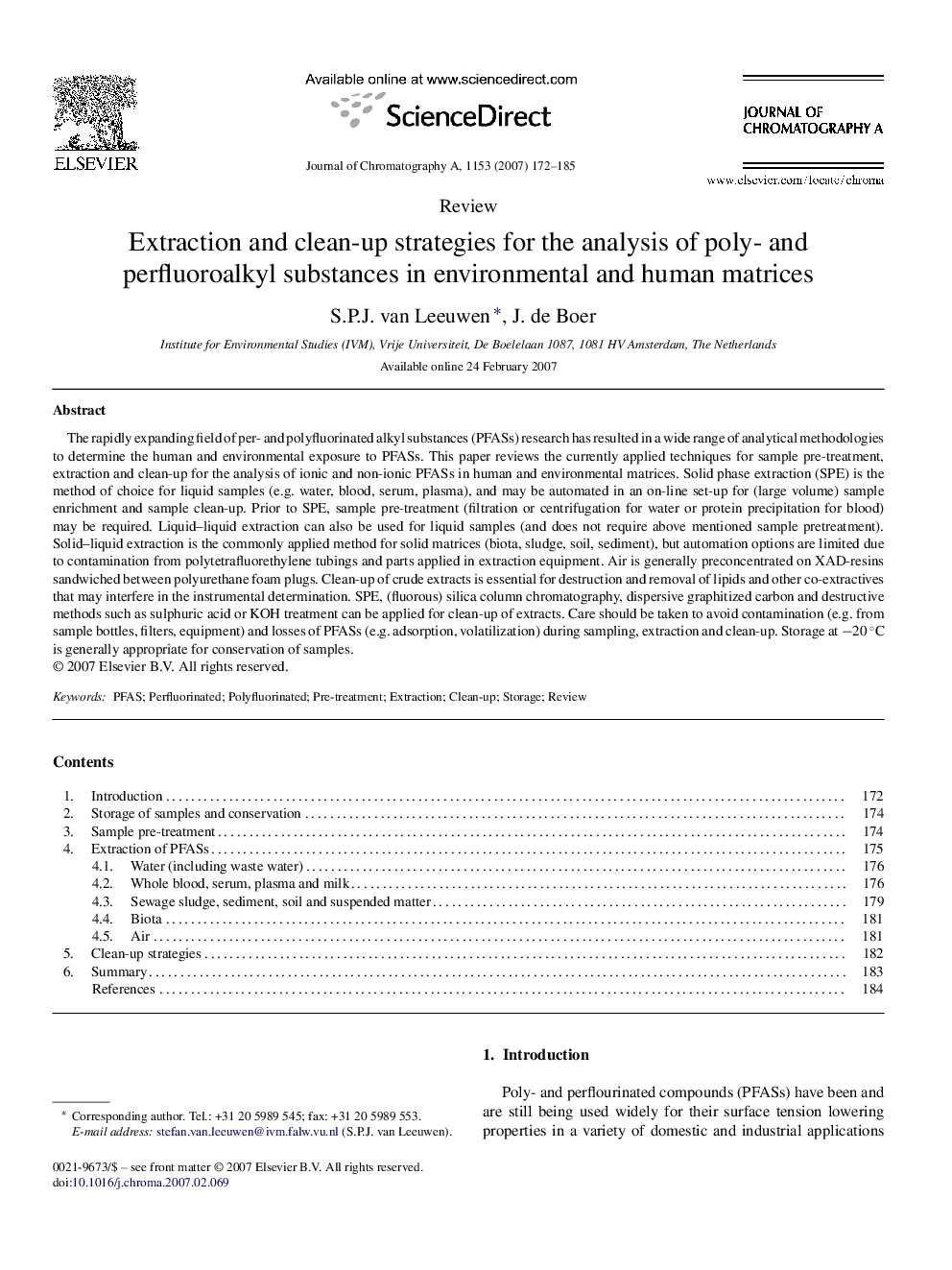| کد مقاله | کد نشریه | سال انتشار | مقاله انگلیسی | نسخه تمام متن |
|---|---|---|---|---|
| 1207602 | 1493749 | 2007 | 14 صفحه PDF | دانلود رایگان |

The rapidly expanding field of per- and polyfluorinated alkyl substances (PFASs) research has resulted in a wide range of analytical methodologies to determine the human and environmental exposure to PFASs. This paper reviews the currently applied techniques for sample pre-treatment, extraction and clean-up for the analysis of ionic and non-ionic PFASs in human and environmental matrices. Solid phase extraction (SPE) is the method of choice for liquid samples (e.g. water, blood, serum, plasma), and may be automated in an on-line set-up for (large volume) sample enrichment and sample clean-up. Prior to SPE, sample pre-treatment (filtration or centrifugation for water or protein precipitation for blood) may be required. Liquid–liquid extraction can also be used for liquid samples (and does not require above mentioned sample pretreatment). Solid–liquid extraction is the commonly applied method for solid matrices (biota, sludge, soil, sediment), but automation options are limited due to contamination from polytetrafluorethylene tubings and parts applied in extraction equipment. Air is generally preconcentrated on XAD-resins sandwiched between polyurethane foam plugs. Clean-up of crude extracts is essential for destruction and removal of lipids and other co-extractives that may interfere in the instrumental determination. SPE, (fluorous) silica column chromatography, dispersive graphitized carbon and destructive methods such as sulphuric acid or KOH treatment can be applied for clean-up of extracts. Care should be taken to avoid contamination (e.g. from sample bottles, filters, equipment) and losses of PFASs (e.g. adsorption, volatilization) during sampling, extraction and clean-up. Storage at −20 °C is generally appropriate for conservation of samples.
Journal: Journal of Chromatography A - Volume 1153, Issues 1–2, 15 June 2007, Pages 172–185